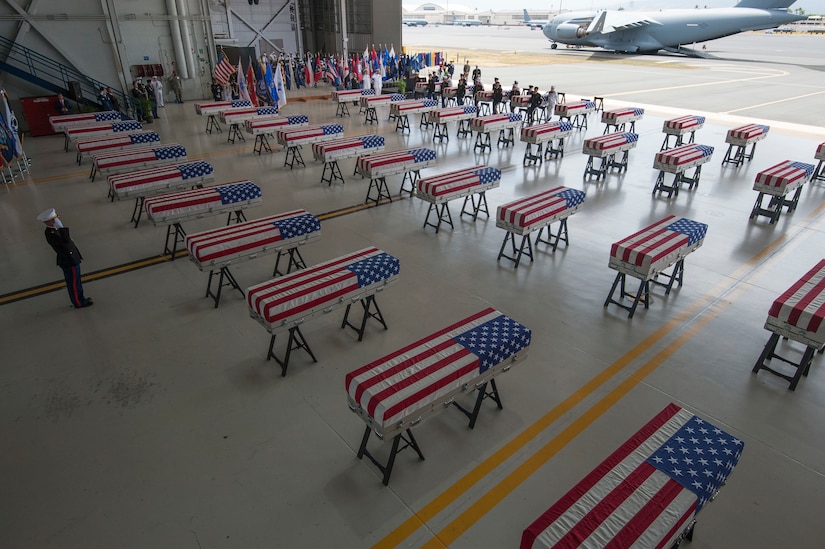By Terri Moon Cronk, DoD News, Defense Media Activity
WASHINGTON -- DNA testing will begin immediately on the 55
boxes of service members’ remains returned to the United States this week from
North Korea, where they were contained since the fall of 1950,
Speaking by phone from the agency’s headquarters in Hawaii,
DPAA Director Kelly K. McKeague and chief scientist Dr. John E. Byrd discussed
the process for identifying the remains.
McKeague said DNA samples exist for 92 percent of U.S.
Korean War service members, and in some cases, dental records also are available
and will be used to analyze the remains. Additionally, chest radiographs are
available for 75 percent of the Korean War missing in action, which will help
when finding chest bones among the remains, Byrd said.
Byrd said the system for processing the remains is “very
sophisticated,” and following DNA identities, that information will go into a
“mass comparison” for matches. McKeague noted that tests can prove the type of
environment in which the service members grew up and the type of water consumed
throughout life, which could narrow down what nation the service members are
originally from.
“It could be months or years to identify remains without
compelling matches to narrow down identities,” Byrd said, adding that he could
not predict when identifications will be completed.
“We feel pretty good about identifying those remains over
time,” he said. He emphasized that most U.S. troops served in the Army during
the Korean War. Additionally, he told reporters, far more Americans than
service members from allied nations served in the Korean War.
Remains Consistent With Americans
“My impression is that as a group, [the remains] are
consistent with the remains we know to be American,” Byrd said of comparisons
with Korean War remains that have been analyzed.
The doctor also said several boxes of material evidence
exist among the 55 boxes, containing such items as boots, buttons, canteens and
uniform items. Only one ID was among those items, and the family has been
notified.
“It’s multiple lines of evidence that lead to
identification.” McKeague said. He noted that a nine-person scientific team
will identify the remains.
Village Locations Critical to IDs
Byrd said the location of villages where remains were found
is critical to identification, based on known battles and POW camps in certain
villages, such as Sinhung-ri, in North Korea.
The North Koreans carefully packaged the remains to a very
high standard, Byrd said. “That kind of care surprised me,” he added, noting
that he has worked extensively with U.S. service member remains out of Korea.
Byrd said it’s too early to tell how many sets of remains
lie in the 55 boxes returned from North Korea.
“The fact that the United States of America pursued this
mission … [is] a sacred obligation and a moral imperative to get the remains,”
McKeague said. “Those sent in harm’s way will not be forgotten.”








No comments:
Post a Comment